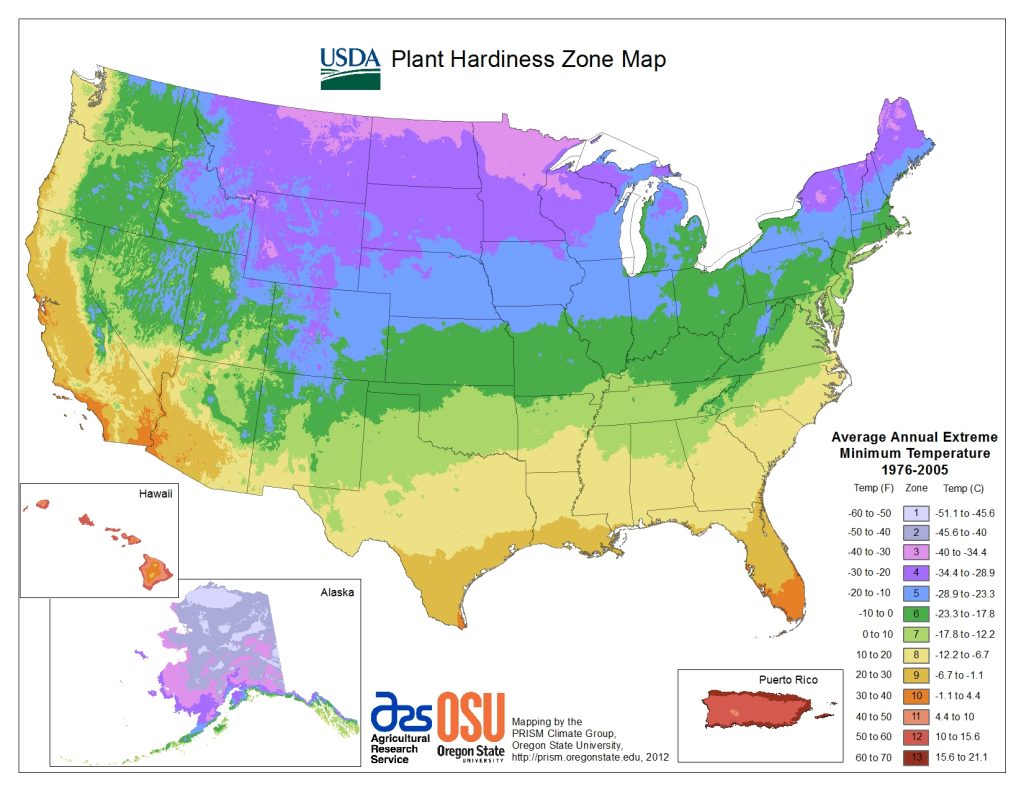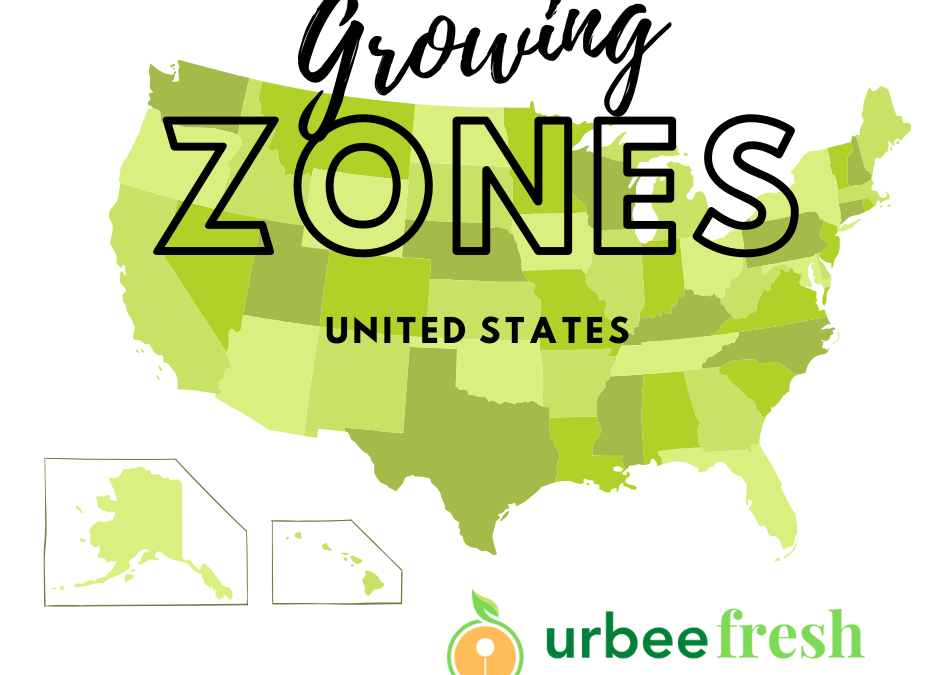
USDA Plant Hardiness/Growing Zone Map courtesy of usda.gov
What are Growing Zones in the United States?
Growing zones are defined by the USDA and are based on the average minimum winter temperatures of each area. Growing zones in the United States are also known as USDA Hardiness Zones. They are divided into 13 zones, each representing a temperature range of 10°F. Zones are further divided into “a” and “b” to provide more specific information about the climate. Here is a general overview:
USDA Plant Hardiness Regions
| Region | Map | States |
| North Central | View | Illinois, Iowa, Kansas, Minnesota, Missouri, Nebraska, North Dakota, South Dakota |
| Northeast | View | Connecticut, Delaware, District of Columbia, Illinois, Indiana, Kentucky, Maine, Maryland, Massachusetts, Michigan, New Hampshire, New Jersey, New York, Ohio, Pennsylvania, Rhode Island, Vermont, Virginia, West Virginia |
| Northwest | View | Idaho, Montana, Northern California, Oregon, Washington, Wyoming |
| South Central | View | Arkansas, Alabama, Louisiana, Mississippi, Oklahoma, Texas |
| Southeast | View | Alabama, Florida, Georgia, Mississippi, North Carolina, South Carolina, Tennessee |
| Southwest | View | Arizona, California, Colorado, Nevada, New Mexico, Utah |
For more detailed information on each region, read this article.
Zone 1:
Temperature: Below -50°F
Characteristics: Extremely cold winters
Examples: Parts of Alaska
Zone 2:
Temperature: -50 to -40°F
Characteristics: Very cold winters
Examples: Northern Alaska, parts of the continental U.S. close to the Canadian border
Zone 3:
Temperature: -40 to -30°F
Characteristics: Cold winters, shorter growing season
Examples: Parts of Alaska, northern states in the continental U.S.
Zone 4:
Temperature: -30 to -20°F
Characteristics: Cold winters but a longer growing season than Zones 1-3
Examples: Upper Midwest, northern New England
Zone 5:
Temperature: -20 to -10°F
Characteristics: Moderately cold winters
Examples: Midwest, parts of New England
Zone 6:
Temperature: -10 to 0°F
Characteristics: Milder winters
Examples: Parts of the Midwest, eastern U.S.
Zone 7:
Temperature: 0 to 10°F
Characteristics: Mild winters
Examples: Many parts of the southern U.S.
Zone 8:
Temperature: 10 to 20°F
Characteristics: Very mild winters
Examples: The southern U.S., coastal areas
Zone 9:
Temperature: 20 to 30°F
Characteristics: Warm winters
Examples: Parts of Texas, Florida, and California
Zone 10:
Temperature: 30 to 40°F
Characteristics: Minimal winter chill
Examples: Southern Florida, southern Texas, southern California
Zone 11:
Temperature: 40 to 50°F
Characteristics: Frost-free
Examples: Extremely southern Florida
Zone 12 and 13:
Temperature: Above 60°F
Characteristics: Tropical climate
Examples: These are specific to Hawaii, Puerto Rico and other U.S. territories in the tropics
Knowing the zone in which you are gardening can provide helpful guidance on which plants are most likely to thrive in your location, as it gives an indication of the minimum temperatures that can be expected and, by extension, what plants can survive those conditions.


Recent Comments